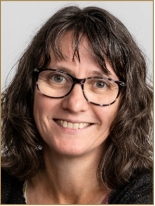Multiple pharmacological agents are now available for individuals with high fracture risk (osteoporosis), raising the issue of which drug/s should be prescribed, and when. The recent review by Martin and Seeman [
1] provides a cell biology basis for understanding sequential therapies in long term bone health.
Antiresorptive agents began with bisphosphonates (alendronate, risedronate, and the nitrogen-containing zoledronate), and now include the anti-RANKL therapy denosumab. As well as suppressing bone resorption, Martin and Seeman make the point that, since osteoclasts initiate bone remodelling, antiresorptives suppress this renewal process. This means they reduce both bone resorption and formation, due to the coupling signals by which osteoclasts recruit osteoblast precursors to the bone remodelling unit [
2], and therefore only slow bone loss. They point out that for this reason, a common approach to osteoporosis therapy is to start by building bone with an anabolic agent, such as teriparatide, abaloparatide, or romosozumab.
Teriparatide and abaloparatide are similar because they are based on the highly-similar N-terminal regions of parathyroid hormone (PTH) and PTH-related protein [
3]. They both build bone by stimulating bone remodelling activity, and by overfilling the resorbed space, equivalent to increasing modeling at a microscopic level [
4]. Although they stimulate remodelling and must therefore stimulate osteoclasts, Martin and Seeman suggest the anabolic effect results mainly from direct actions on the osteoblast lineage. This includes their action to inhibit sclerostin, a Wnt pathway inhibitor which acts as a brake on bone formation. The third anabolic agent available, romosozumab, is an antibody to sclerostin so also releases that brake. These anabolic agents all reduce vertebral fracture incidence, but their efficacy against non-vertebral fractures is not fully established, in part because they have only been provided for a short duration and, in longer term follow-up studies, are followed by antiresorptive therapies which themselves have anti-fracture efficacy [
5].
This last point is important because anabolic treatment should be followed by antiresorptive therapy. While anabolic agents increase bone mass, they do not remain in the system, and when treatment ceases, bone loss occurs. An antiresorptive agent is needed to protect the newly deposited bone by slowing remodelling. Without antiresorptive follow-up, the age-associated decline in bone mass (due to imbalanced bone remodelling) will continue along the same downward trajectory as before therapy.
Since ageing will continue to affect the skeleton, osteoporosis therapy needs to be long term, and probably life-long. This also needs to be considered when antiresorptive therapies are ceased. Temporary “drug holidays” may be feasible for patients who have been on bisphosphonates since these remain in the system and would continue to suppress bone remodelling. In contrast, the antiresorptive benefit of denosumab, which is quickly cleared, is quickly lost [
6]. To prevent continuing bone loss, cessation of denosumab should be followed as soon as practical with an alternative antiresorptive approach such as a bisphosphonate.
Those considering how best to commence, and continue, therapies for osteoporosis will be aided by understanding how each therapy influences the cells within the skeleton and the ways they interact, and the information in the review provides a helpful perspective.






